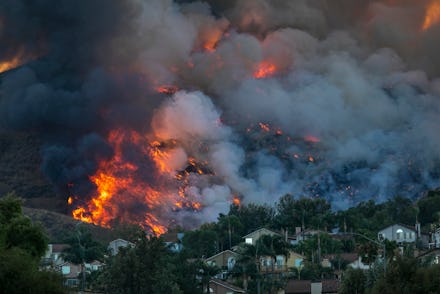Pandemics will likely keep happening if we don't address climate change

It's hard not to draw parallels between the United States's botched responses to coronavirus and climate change. Both are pressing threats to the wellbeing of the general public that were largely ignored by those in power until the last possible minute. But there is more that connects the two than the government’s disastrous mismanagement. A new study published last week by the Intergovernmental Platform on Biodiversity and Ecosystem Services (IPBES) found that pandemics and other widespread diseases have become more common due to human activity that has destroyed parts of the natural world. That upward trend, the study predicts, will continue until climate change is adequately addressed.
The study found that there are an estimated 1.7 million "undiscovered" viruses, or viruses that we do not yet know or understand, that exist within the animal kingdom among mammals and birds. Between 540,000 and 850,000 of those diseases could be transmitted to humans. And if humans don't change their behaviors, addressing climate change, and ending practices like deforestation, the odds of those viruses making their way to humans increases.
“The same human activities that drive climate change and biodiversity loss also drive pandemic risk through their impacts on our environment," Dr. Peter Daszak, President of EcoHealth Alliance and Chair of the IPBES workshop, said in a statement. "Changes in the way we use land; the expansion and intensification of agriculture; and unsustainable trade, production and consumption disrupt nature and increase contact between wildlife, livestock, pathogens and people. This is the path to pandemics.”
As the human population has continued to grow, the demand for goods including food has grown along with it. That has led to people encroaching upon previously untouched natural habitats. Humans have uprooted millions of acres of forests to make room for more farmland and pushed thousands of species out of their homes in order to build and expand cities and urban sprawl. As a result, humans move closer to the disease-carrying creatures that can infect and cause a pandemic.
The researchers note that there have been at least six global pandemics since the Great Influenza Pandemic of 1918, sometimes referred to as the Spanish Flu. In most cases, including bird flu, HIV, and coronavirus, those diseases originated in animals. But it was human activity that led to the jump from animal to human.
It's not just proximity, though. When humans make their way into a natural habitat, they also upend the ecosystem and destroy many of the natural defenses that would otherwise prevent diseases from entering our lives. In a healthy and functioning ecosystem, predator species often hunt smaller prey that carry diseases and viruses. But as people move into these spaces, those predators are often driven out. The prey — creatures like rats — tend to stick around and adapt to the new environment, in many cases even growing their population.
With fewer predators there to cull those creatures, the diseases spread among them more readily, and the risk of those diseases reaching humans is increased. A study published earlier this year in the journal Nature found that diseases that can move from animal to person were 2.5 times more likely to be present in areas that have damaged ecosystems. Potential carrier species living in areas with lower biodiversity were also found to be 70 percent more likely to carry a transmittable disease.
Part of fighting climate change means preserving biodiversity. It is nature's own defense mechanism to keep ecosystems functioning. That natural defense also keeps humans safe, but we keep disrupting it through our ongoing incursions into previously untouched parts of the natural world. If we continue, dealing with diseases like coronavirus might become the new norm.